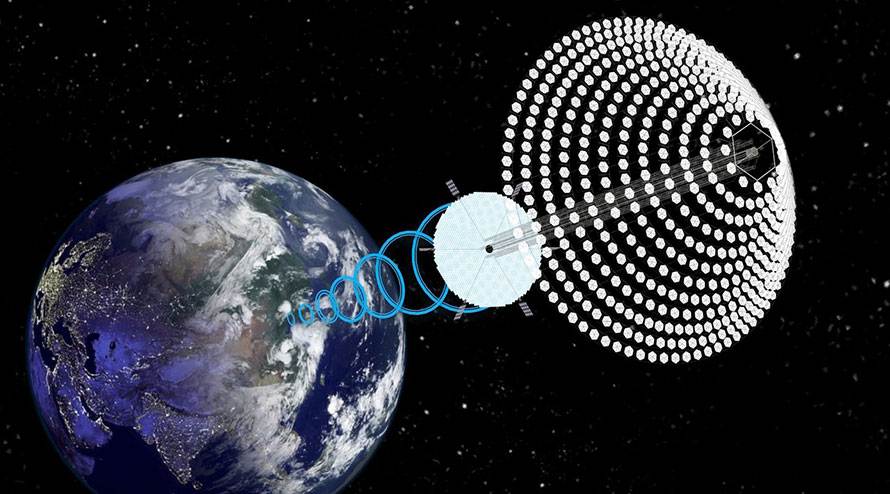NASA’s Office of Technology, Policy, and Strategy Publishes Report on Clean Power from Space but Leaves Critical Gaps in Technology and Economic Assessments
Image: A space solar power station. Credit: John Mankins
The National Space Society (NSS) congratulates NASA’s Office of Technology, Policy, and Strategy (OTPS) on the completion of its new report entitled “Space-Based Solar Power” on January 11. The report “evaluates the potential benefits, challenges, and options for NASA to engage with growing global interest in space-based solar power (SBSP), [which] entails in-space collection of solar energy, transmission of that energy to one or more stations on Earth, conversion to electricity, and delivery to the grid or to batteries for storage.”
NSS has been a leading advocate of space-based solar power since it was first studied in the 1970s. Solar power from orbit promises to provide continuous, clean, affordable, and plentiful power, and executed properly, could exceed global needs without resource depletion. It is clearly the leading technology for clean energy in the 21st century.
While NASA’s report was generally encouraging, it stopped short of a thorough examination of the real costs and promise of space-based solar power technology. NSS has supported the study of the overall problem, and specifically the economics of design, construction, and launch deployment, for decades.
“NSS welcomes the recognition of the importance of space solar power in the OTPS report and looks forward to providing input to NASA to clarify and enhance the conclusions,” said Dale Skran, NSS COO.
John Mankins, a leader in SBSP technology and design since the 1970s, said, “Space solar power is one of a handful of feasible globally-scalable energy solutions that could be advanced in the mid-term. NASA’s report identifies the importance of solving key challenges such as the launch, assembly and maintenance of large space systems in orbit that are essential to space solar and other ambitious goals.” Mankins worked at NASA for decades, was an early leader in SBSP studies, and continues to develop and advocate for space-based solar power through his company, Mankins Space Technology, as well as through his positions with the International Academy of Astronautics’ Permanent Committee on Space Solar Power and on the Board of Directors for NSS.
NSS feels that the NASA OTPS report, while a welcome revisiting of a technology that was first conceived in the U.S., offers an incomplete assessment of the viability of space-based solar power as a solution to the world’s rapidly expanding energy needs. There are a number of new technologies that make SBSP a leading candidate in our efforts to mitigate climate change than might be gathered from this report.
Specifically, the economics of the report can be improved dramatically by a number of launch capabilities currently under development. Should SpaceX’s Starship, for example, reach even a fraction of its projected capability, it should offer launch costs far lower than even the most optimistic assumptions of the report. Additionally, added Skran, “the exclusion of ion rockets in the baseline model for lifting the solar power satellites from low Earth orbit to geosynchronous orbit greatly and unreasonably increased the report’s estimates of both launch costs and related emissions into the atmosphere.” Including these emerging launch technologies could significantly improve the outlook toward space solar power as a carbon-free energy source once deployed.
Finally, the report based its findings on a ten-year life span for the orbital power stations, far short of the 30-year (and possibly much longer) duration suggested by Mankins’ detailed analyses.
There is more to report on the promise of space-based solar power as a solution to our planet’s expanding energy needs. For more on this critical clean energy source, see the NSS Space Solar Power initiative.



















